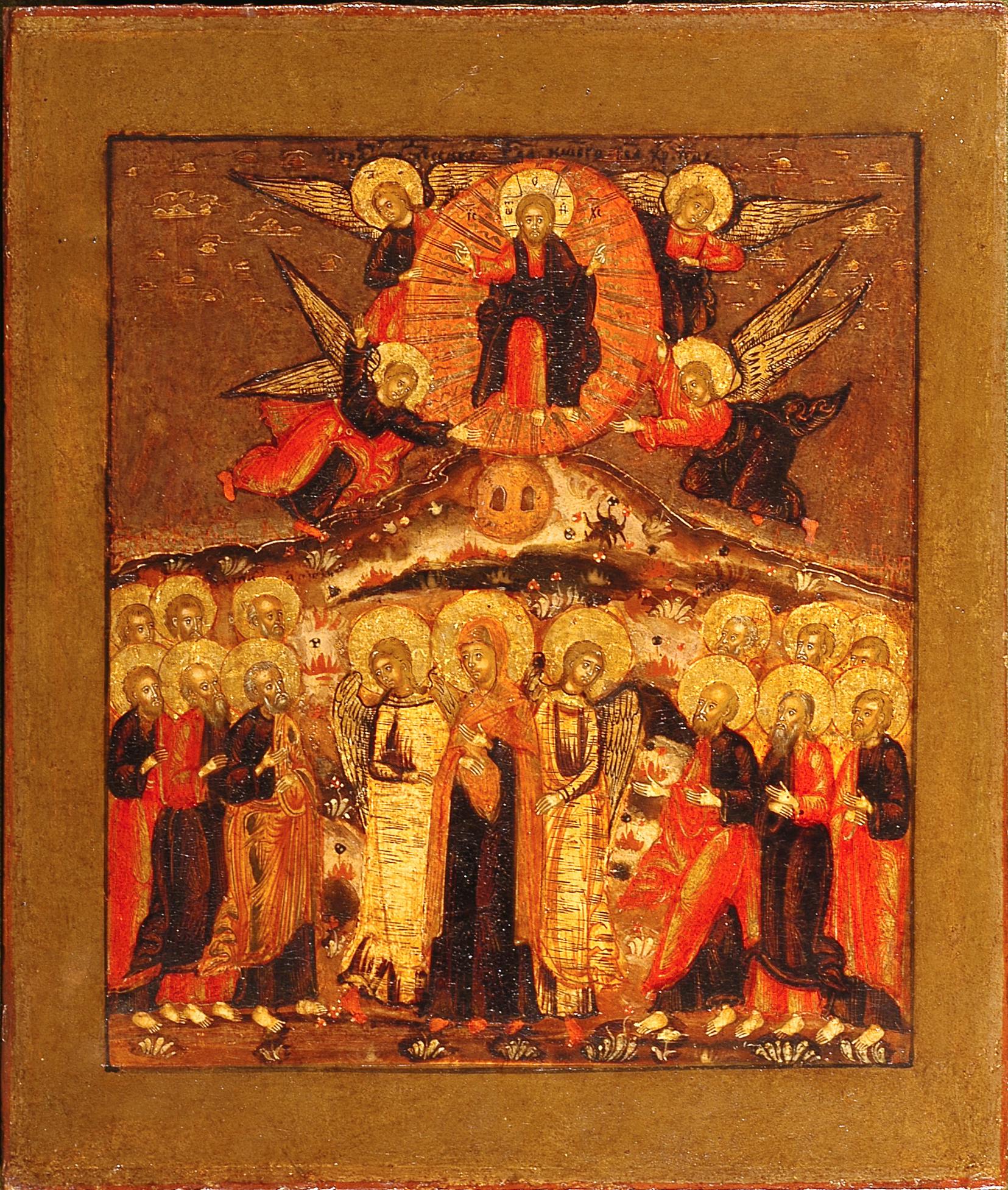The Ascension of Christ
Central Russia
The Ascension of Christ into heaven, a celebration introduced in the fourth century, is one of the twelve great feasts in the Orthodox liturgical calendar that is also shared by Western Christianity. The story is taken from the Gospels and the Acts of the Apostles and describes how, 40 days after the resurrection, Christ spoke to the apostles and entrusted them with the evangelical mission, then ascended to heaven in the flesh. Two angels appeared to the disciples proclaiming Christ's return to earth. The icon also depicts the Virgin Mary, who is not mentioned in the Gospel texts narrating the story though is mentioned in the liturgical texts recited on the feast of Ascension. She represents the Church, while the apostles are the faithful gathered underneath. The apostles include St. Paul, not actually a direct witness of the event, demonstrating the symbolic significance attributed to the subject depicted in the icon, which transcends the objectivity of the historical narrative. The blessing Christ appears in a mandorla of glory supported by angels: his figure heralds the second descent to earth and the Last Judgement. Beneath the mandorla, at the mountain summit, is a round stone with the imprint of the Saviour's feet, a reference to a revered relic of the Byzantine world, namely, the stone on which Christ would rest his feet before the Ascension.
This icon exhibits similarities with the one depicting Elijah in the Desert (inv.1890 no.6174) in its predominant red, ochre and brown tones and in refined facial modelling despite rather schematic forms; they are likely to have been executed by the same master around 1730-1740.
